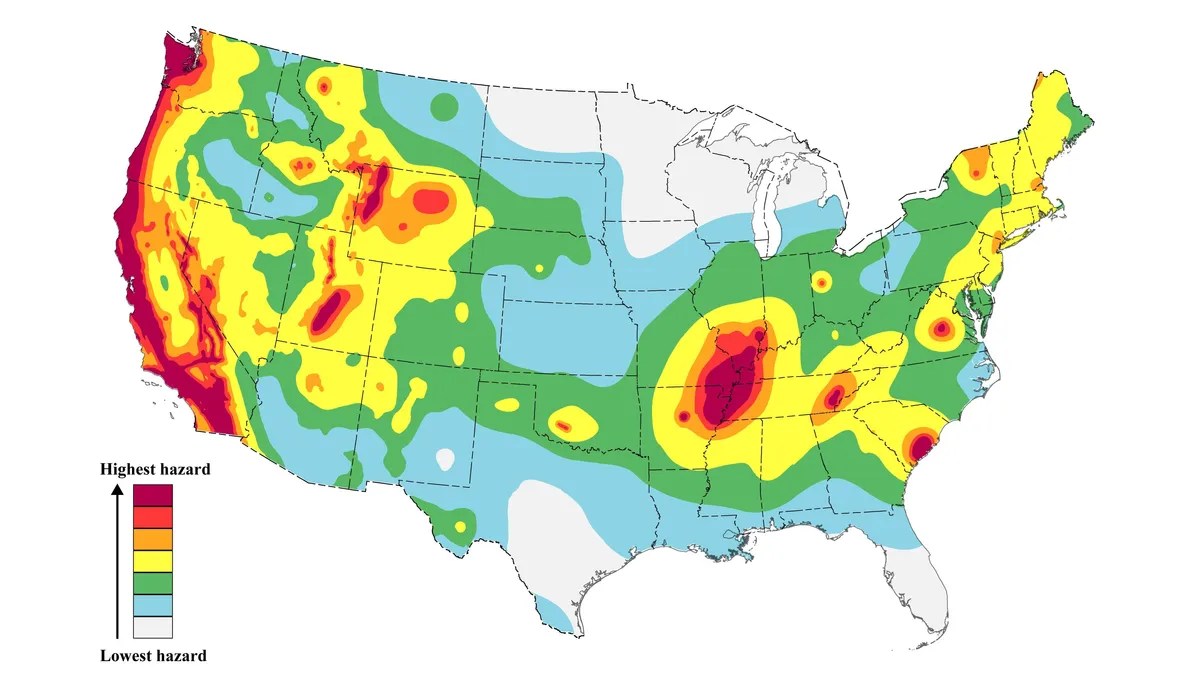
If you live on the West Coast, the chances are you’re pretty well versed when it comes to what to do in the event of an earthquake.
This kind of geological activity is no stranger to those living in proximity of the San Andreas Fault, and you probably grew up with classroom drills, meaning that you’re well prepared.
But there are areas of the US where earthquakes are far less common, but according to recently discussed trends in seismic activity, one is coming: and the likelihood is, it will be a big one.
In a recent feature, IFLScience unpacked the science and myths behind the New Madrid Seismic Zone, a 150-mile long, lesser known fault line in the Midwest, specifically located by the Illinois Emergency Management Agency:
“The NMSZ lies within the central Mississippi Valley, extending from northeast Arkansas, through southeast Missouri, western Tennessee, and western Kentucky to southern Illinois.”
So, if this is such a powerful fault line, why hasn’t there been an earthquake in our lifetimes?
Well, this fault line doesn’t cause earthquakes as regularly as other seismic zones.
However, as the United States Geological Survey report, the seismic activity here is fairly regular, happening most recently in 1811, and about every half millennium before that:
“The New Madrid seismic zone generated magnitude 7 to 8 earthquakes about every 500 years during the past 1,200 years.”
In fact, there is evidence of devastating earthquakes on this fault line in the years 1450, 900, 300, and even as far back as 2350 BCE.
So, by that reckoning, the next big earthquake in the New Madrid Seismic Zone should be expected in the early 2300s. But that’s not to say that Midwesterners should not be prepared.
Unlike the most common seismic areas, including the San Andreas Fault – which lies on the boundary between the North American and Pacific tectonic plates – the New Madrid Seismic Zone is located in the middle of a plate.
And fault lines that occur on, rather than between tectonic plates, are much less well understood – and therefore, less predictable.
Because earthquakes at the New Madrid Seismic Zone happen fairly infrequently, we only have records from the most recent quakes – in 1811 – as a basis for our understanding of what seismic activity is like here.
However, it is unlikely that such a strong earthquake would hit the region again, with the USGS Earthquake Hazards Program stating “we would estimate a 25 – 40 percent chance of a magnitude 6.0 and greater earthquake in the next 50 years, and about a 7 – 10 percent probability of a repeat of the 1811-1812 earthquakes in the same time period.”
But regardless of this, it pays to be prepared. And as the Midwest is not well known for its seismic activity, time might be ticking for the region to get ready for the earthquake that is almost certainly in its future.
By following the protocols of the West Coast, where preparations for seismic activity are routine, and providing funding to ensure building and residents are safe, the region can prevent a repeat of 1811. It’s crucial that if and when another massive earthquake hits, it takes no one by surprise.
If you think that’s impressive, check out this story about a “goldmine” of lithium that was found in the U.S. that could completely change the EV battery game.